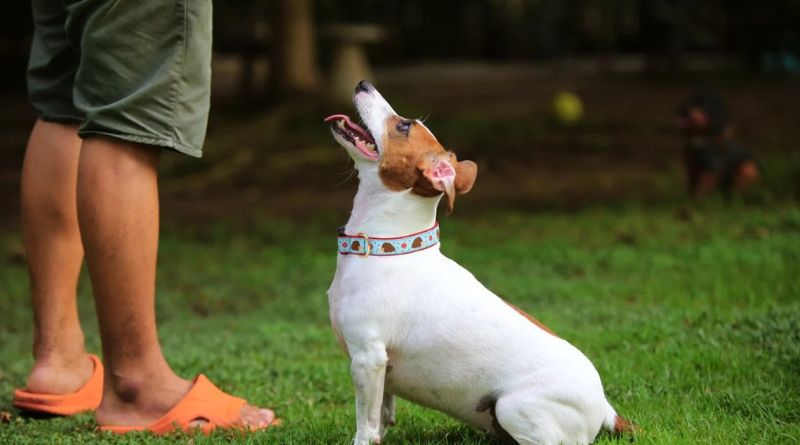When it comes to caring for your dog, one of the most important accessories you’ll need is a dog collar. A collar not only serves as a functional tool for walking, identification, and training, but it can also be a stylish expression of your pet’s personality. With so many options available, from simple nylon collars to high-tech GPS-enabled ones, it can be challenging to choose the best one for your dog.
In this comprehensive guide, we’ll explore the different types of dog collars, their features, and how to choose the best collar based on your dog’s size, breed, and lifestyle. We’ll also address some common questions to help you make an informed decision when purchasing a collar for your dog.
Table of Contents
What is a Dog Collar?
A dog collar is a piece of equipment worn around a dog’s neck, typically used for identification, training, and safety. Collars are often equipped with a D-ring to attach a leash, along with a buckle or clasp to secure the collar around the dog’s neck. They come in various materials, designs, and sizes, catering to different purposes and breeds.
Collars are essential for any dog, whether it’s for everyday use, walking, or special purposes such as training or safety. The right collar will keep your dog secure and comfortable, while also ensuring that you have control when needed.
Types of Dog Collars
Before choosing the best collar for your dog, it’s important to understand the different types available. Here are the most common types of dog collars:
1. Flat Collars
Flat collars are the most common type of dog collar, and they come in various materials such as nylon, leather, or cotton. These collars are adjustable and designed for everyday use. They typically have a D-ring to attach a leash and a tag holder for identification.
- Best for: Everyday use, walking, and ID tags.
- Pros: Comfortable, adjustable, and available in various colors and designs.
- Cons: Not ideal for dogs that pull or have a tendency to slip out of their collar.
2. Martingale Collars
Martingale collars are designed to prevent dogs from slipping out of their collars, making them a good choice for dogs with narrow heads or those prone to escaping. These collars feature a loop that tightens when the dog pulls, providing extra control without choking.
- Best for: Dogs with narrow heads, training, or breeds prone to slipping out of collars.
- Pros: Prevents escape, gentle, and ideal for training.
- Cons: Can be too tight for some dogs if not properly adjusted.
3. Choke Chains
Choke chains are designed for training purposes, offering control over a dog’s movements. These collars tighten around the dog’s neck when the leash is pulled, creating a “choking” effect. They are often used by trainers for correcting unwanted behavior, but they can be harmful if not used properly.
- Best for: Professional trainers or experienced dog owners for behavior correction.
- Pros: Offers control during training.
- Cons: Can cause injury if used incorrectly; not recommended for all dogs.
4. Prong Collars
Prong collars, also known as pinch collars, have metal prongs that press into the dog’s neck when the leash is pulled. These collars are used for training, especially for large or strong dogs that pull excessively. Like choke chains, prong collars require careful use and should only be used under the guidance of a professional.
- Best for: Training large dogs with pulling issues.
- Pros: Provides control during walks.
- Cons: Can cause discomfort or injury if not used properly.
5. Harness Collars
Harness collars, also known simply as “harnesses,” wrap around the dog’s chest and torso, providing more control and comfort than traditional collars. They are an excellent choice for dogs that pull on the leash, as they distribute pressure evenly across the body.
- Best for: Dogs that pull, small dogs, or dogs with neck sensitivities.
- Pros: Comfortable, safe, and ideal for leash walking.
- Cons: May be harder to fit for some dogs, and not always suitable for training.
6. GPS Dog Collars
With technology advancements, GPS dog collars have become increasingly popular. These collars allow you to track your dog’s location in real-time using a smartphone app or a web portal. GPS collars are perfect for active dogs that spend time outdoors or for those who are prone to running away.
- Best for: Dogs with high activity levels, outdoor adventures, or wandering tendencies.
- Pros: Real-time tracking, added security.
- Cons: Expensive, requires charging or battery replacement.
7. Reflective and LED Collars
Reflective or LED collars are designed to increase visibility during walks, especially at night or in low-light conditions. These collars often have reflective stitching or built-in LED lights, making your dog more visible to drivers, cyclists, and pedestrians.
- Best for: Night walks, visibility, or dogs with poor eyesight.
- Pros: Enhances safety, easy to spot in low light.
- Cons: Requires batteries or charging for LED versions.
How to Choose the Best Dog Collar for Your Pet
Selecting the right dog collar for your pet depends on several factors, including your dog’s size, breed, and behavior. Here are some tips to help you choose the best collar:
1. Consider Your Dog’s Size and Breed
- Small dogs: Opt for a lightweight collar made of nylon or soft leather. Avoid heavy materials that could weigh down your dog or cause discomfort.
- Large dogs: A sturdier collar made of thick leather or heavy-duty nylon is ideal. These collars offer the strength and durability needed for bigger breeds.
- Active or energetic dogs: Consider a harness or a collar with added control features, such as a martingale collar, to prevent pulling.
2. Determine the Purpose
- Everyday wear: A simple flat collar made of nylon or leather is a great choice for daily use.
- Training: A martingale collar or a prong collar may be suitable for dogs undergoing training, especially for behavior correction.
- Outdoor activities: If your dog spends time outdoors, a GPS collar can help you keep track of their location, and an LED collar can ensure visibility.
3. Check for Comfort
Choose a collar that’s comfortable for your dog to wear. It should not be too tight or too loose. You should be able to fit two fingers comfortably between the collar and your dog’s neck.
4. Quality and Durability
Invest in a high-quality collar made from durable materials, especially if your dog is active or tends to pull. Collars made from nylon, leather, or neoprene are generally durable and long-lasting.
Popular Dog Collar Brands
There are many brands that offer top-quality dog collars. Some popular options include:
- Blueberry Pet: Known for stylish and durable collars, Blueberry Pet offers a wide variety of designs and sizes.
- Ruffwear: Ideal for active dogs, Ruffwear collars are made with high-quality materials and offer great comfort and functionality.
- Kurgo: Known for their outdoor and travel-oriented dog gear, Kurgo offers durable collars with reflective features and high-quality materials.
- PetSafe: PetSafe collars are designed for all types of dogs and are often used in conjunction with training systems or as part of behavior-correction methods.
FAQs About Dog Collars
1. How tight should a dog collar be?
- A dog collar should be snug but not too tight. You should be able to fit two fingers comfortably between the collar and your dog’s neck. If it’s too tight, it could cause discomfort or restrict breathing, and if it’s too loose, your dog may slip out of it.
2. Can I leave my dog’s collar on all the time?
- Yes, in most cases, dogs can wear their collars all the time, especially if they are using a flat collar with ID tags. However, if you’re using a training collar (like a choke or prong collar), it’s best to remove it after walks or training sessions to prevent injury.
3. Are reflective collars effective at night?
- Reflective collars can help make your dog more visible in low-light conditions. For even better visibility, you can opt for a collar with built-in LED lights, which provide greater visibility.
4. How do I clean my dog’s collar?
- Nylon collars can typically be machine washed or hand washed with mild soap and water. Leather collars should be cleaned with a damp cloth and conditioned regularly to prevent cracking. Always follow the manufacturer’s care instructions.
5. How do I know which collar is best for my dog?
- Consider your dog’s size, breed, and behavior. For example, a harness may be better for a dog that pulls on the leash, while a flat collar is ideal for everyday use. Always ensure the collar fits comfortably and securely.
Conclusion
Choosing the best dog collar is essential for your pet’s comfort, safety, and well-being. Whether you need a basic collar for everyday use, a training collar, or a high-tech GPS tracker for added security, there are many options to choose from. By understanding your dog’s needs and preferences, you can select a collar that will keep them safe, stylish, and comfortable. With the right collar, you can enhance your pet’s lifestyle and enjoy many happy walks and adventures together.



